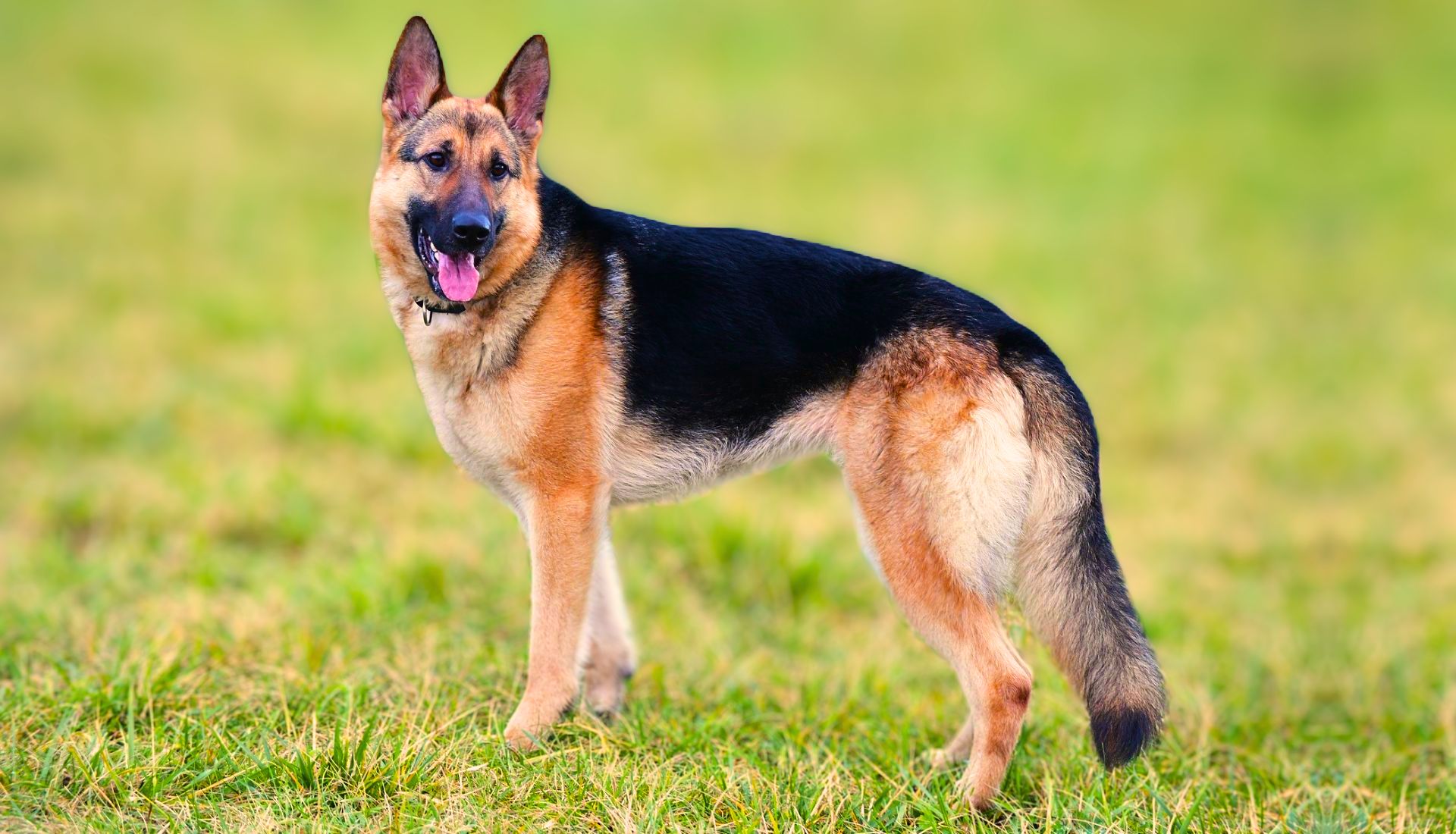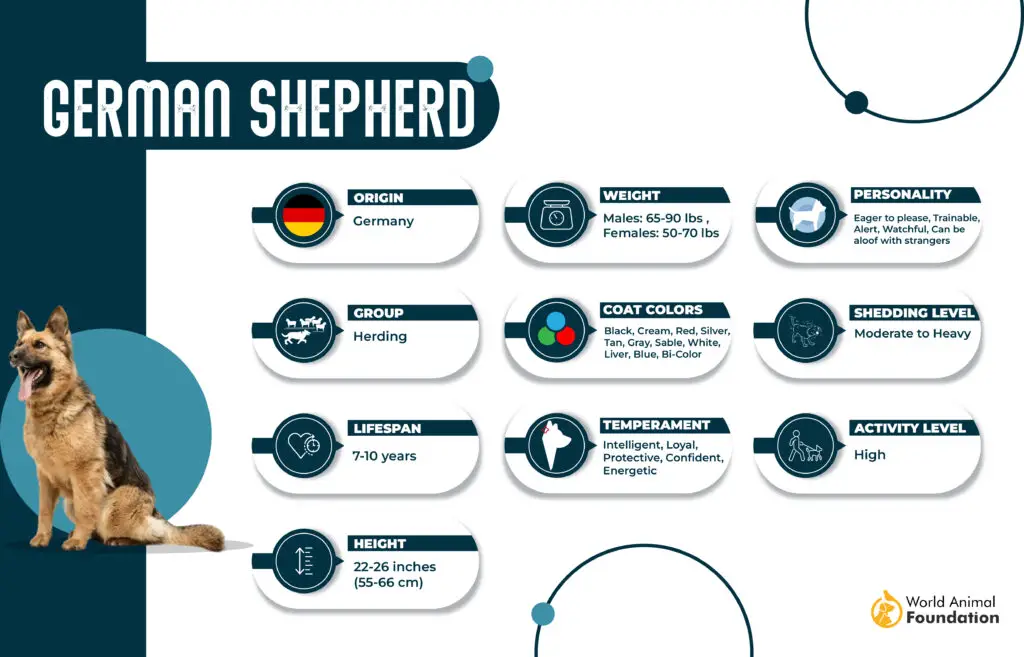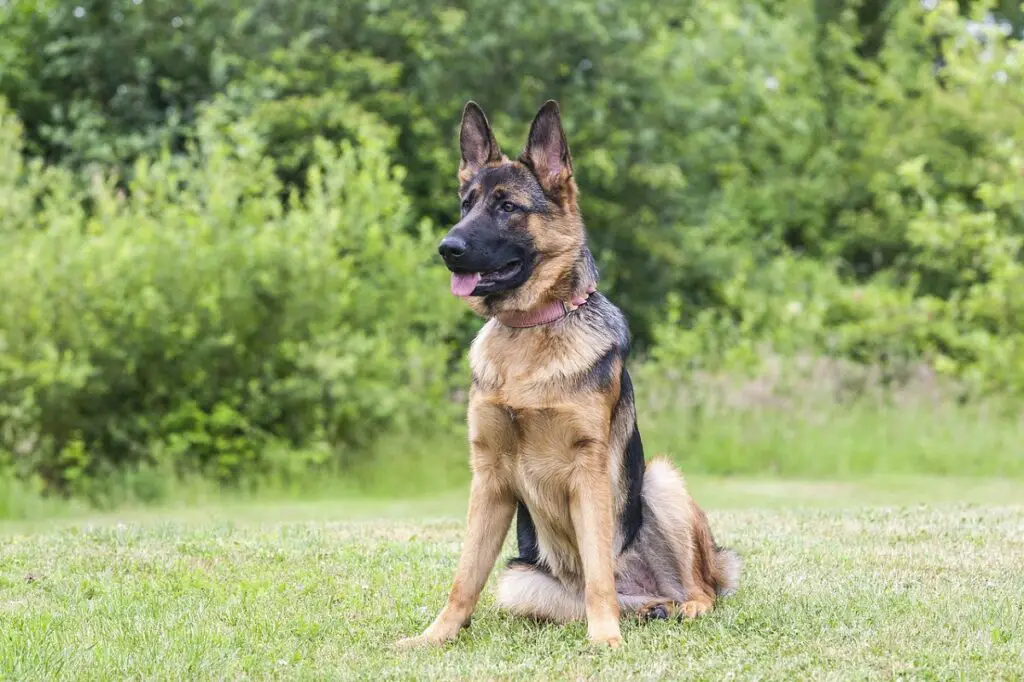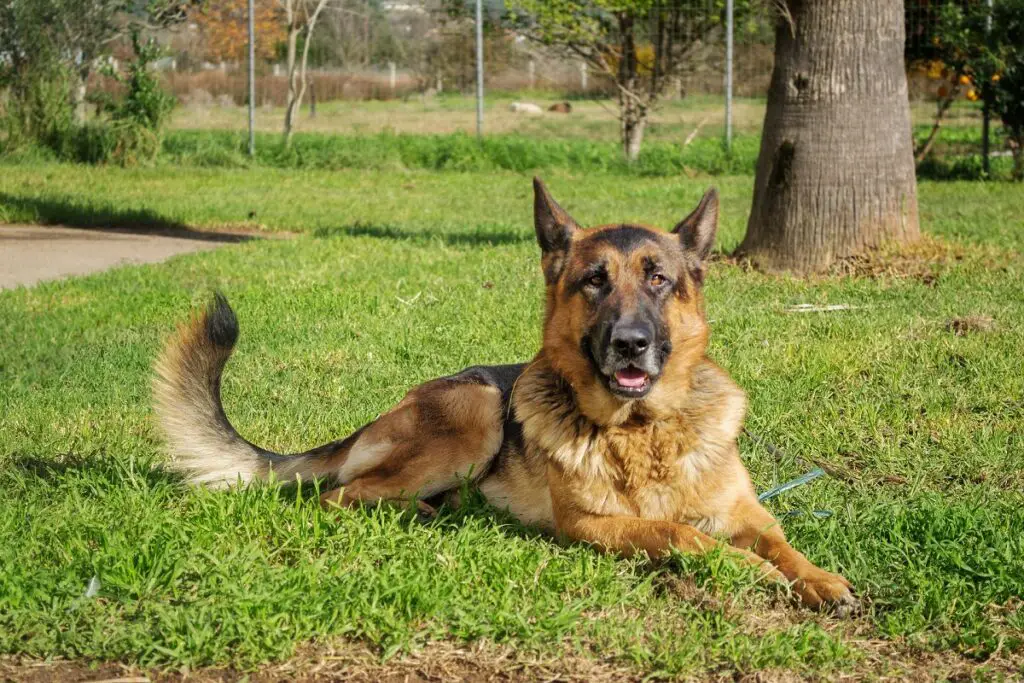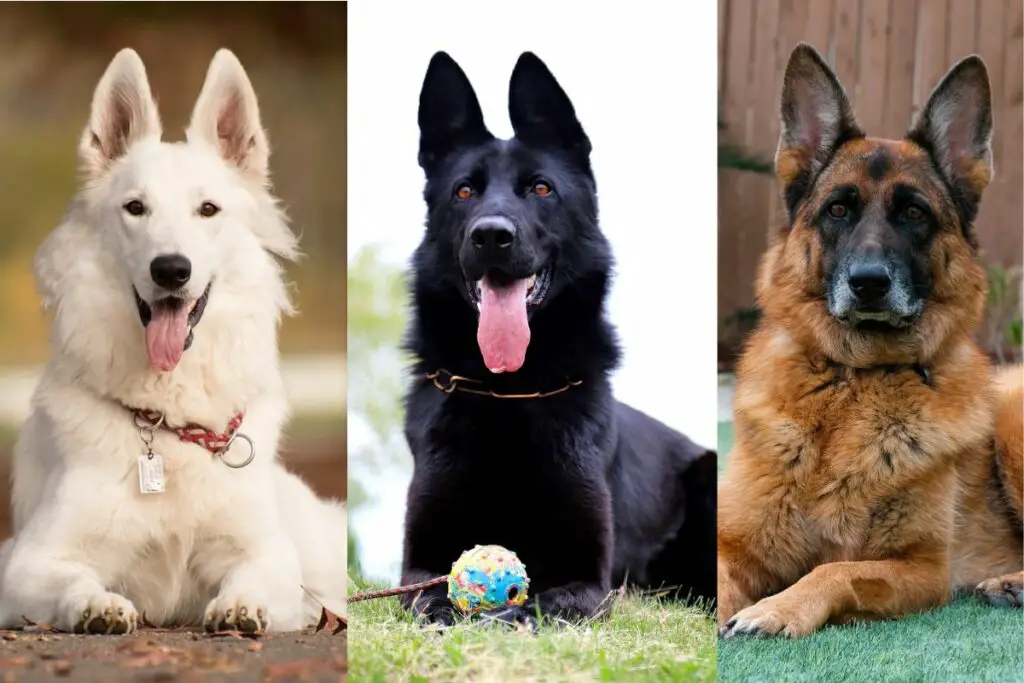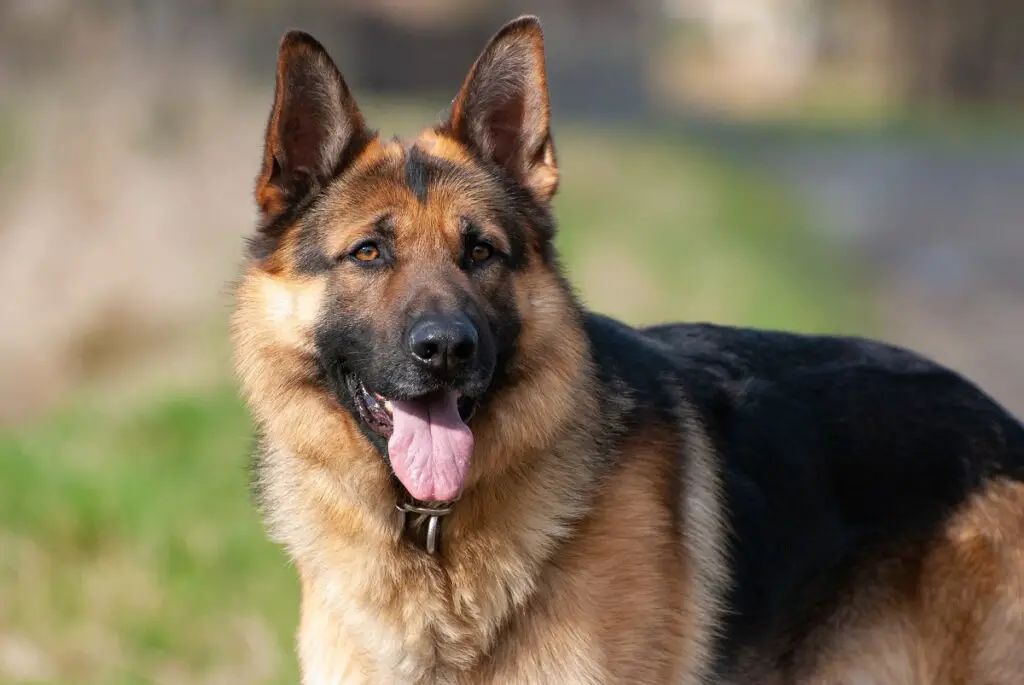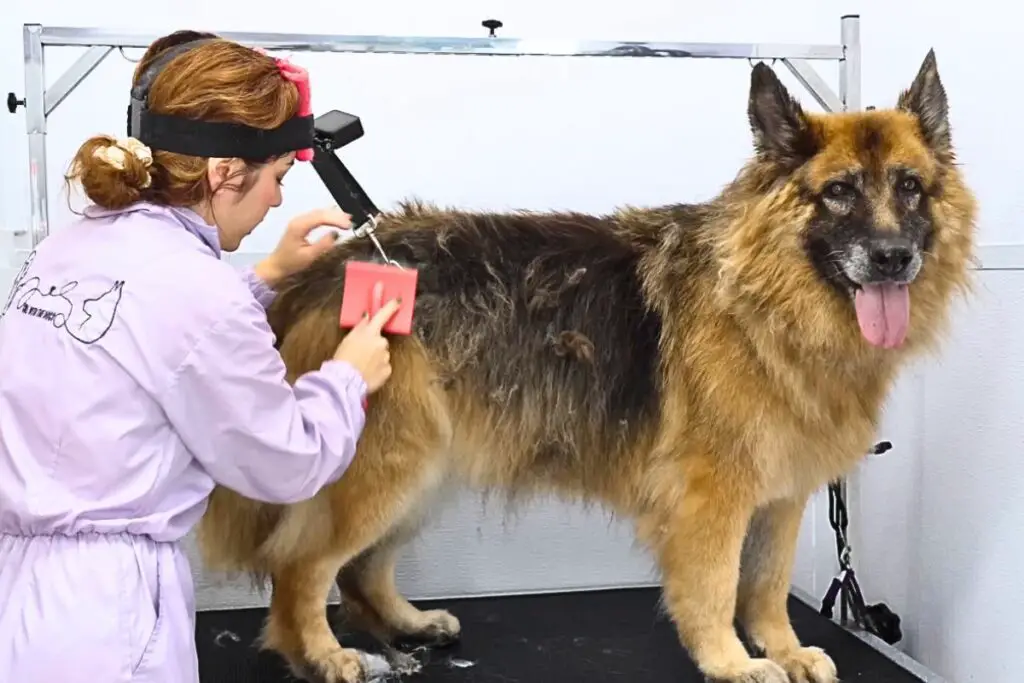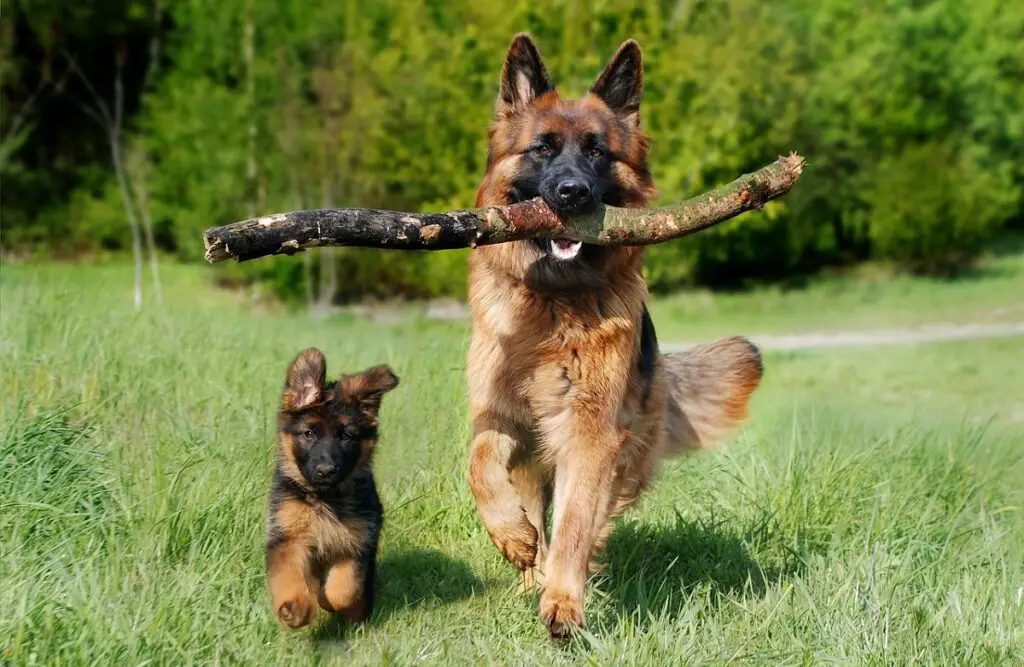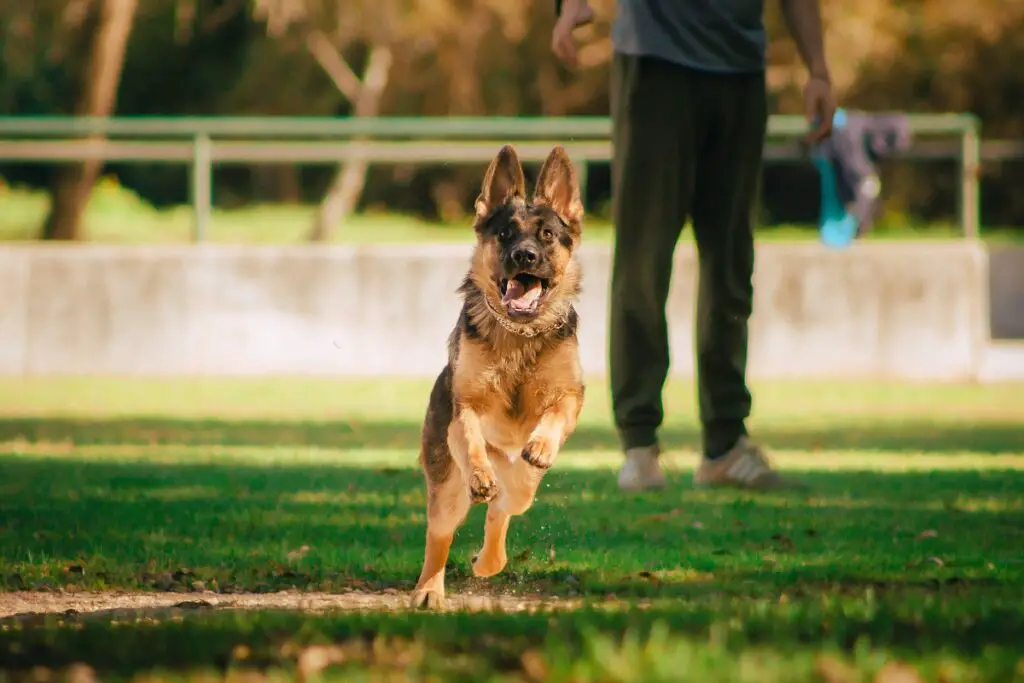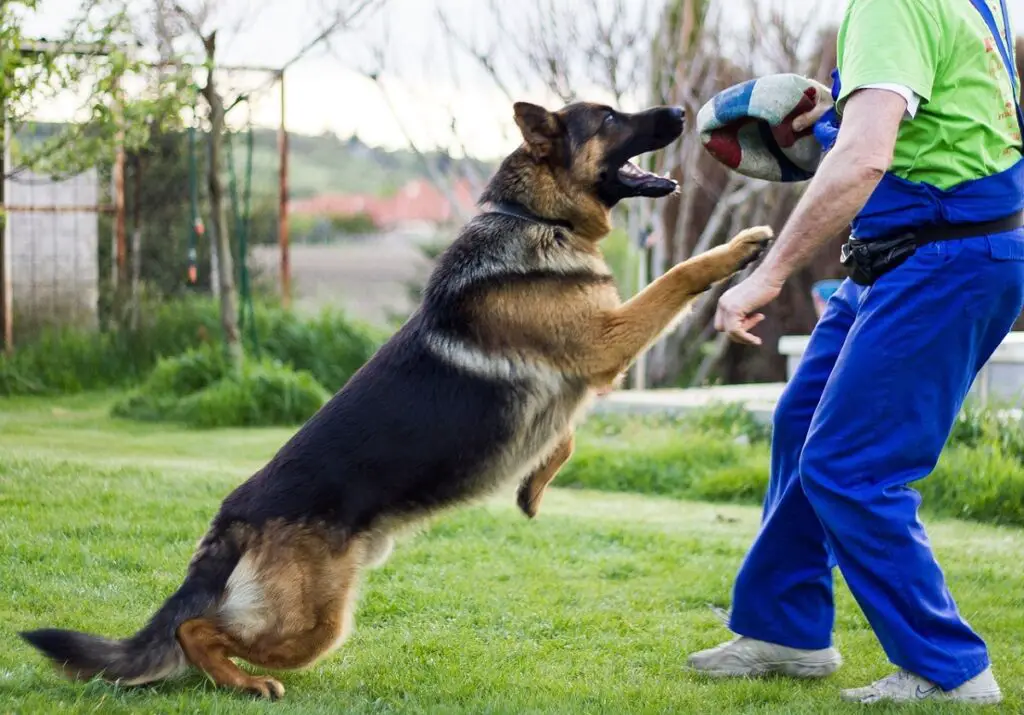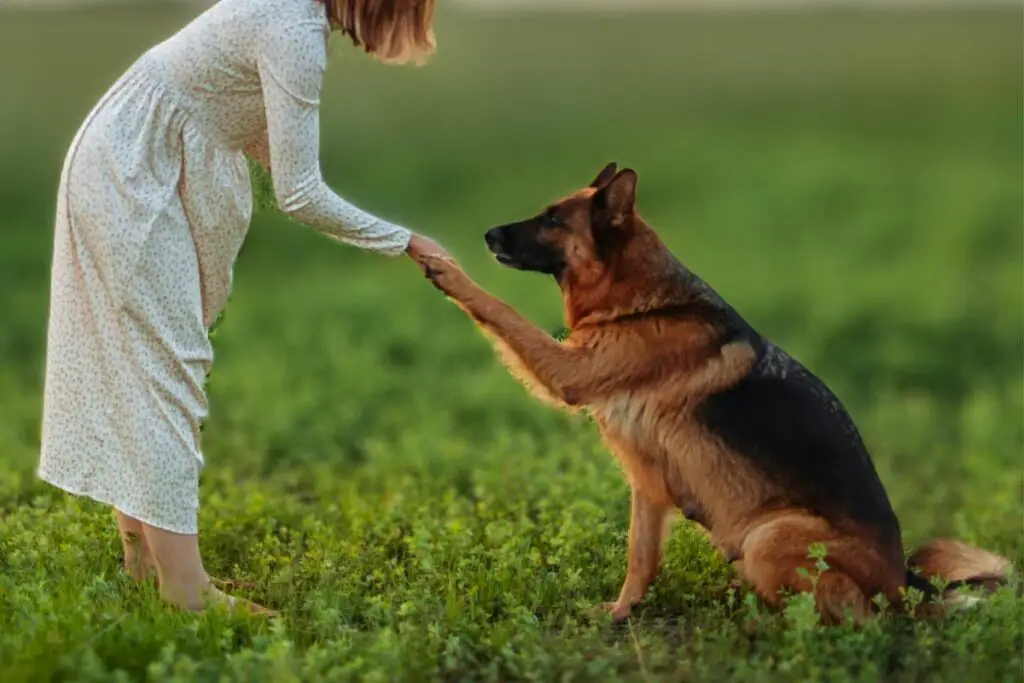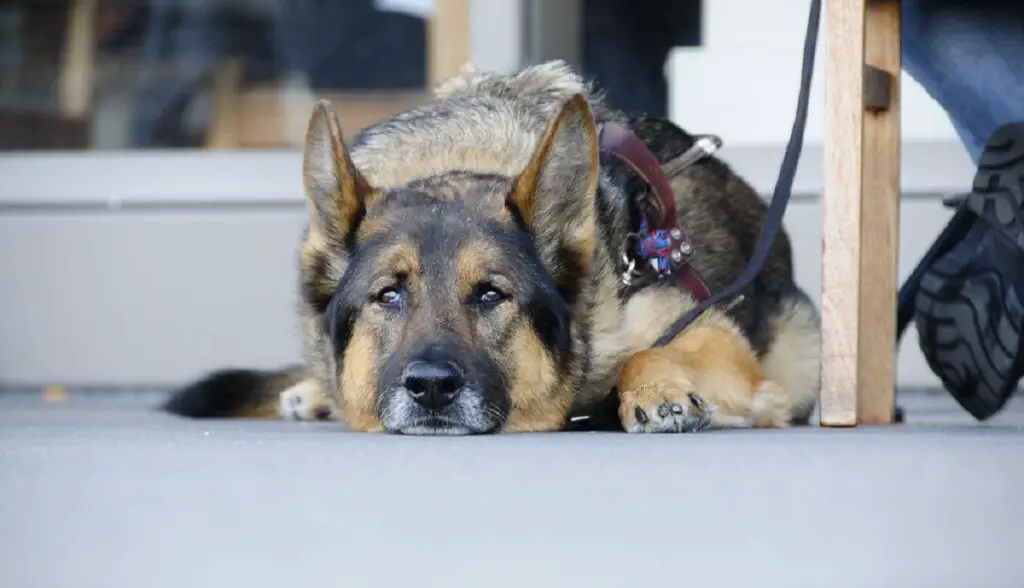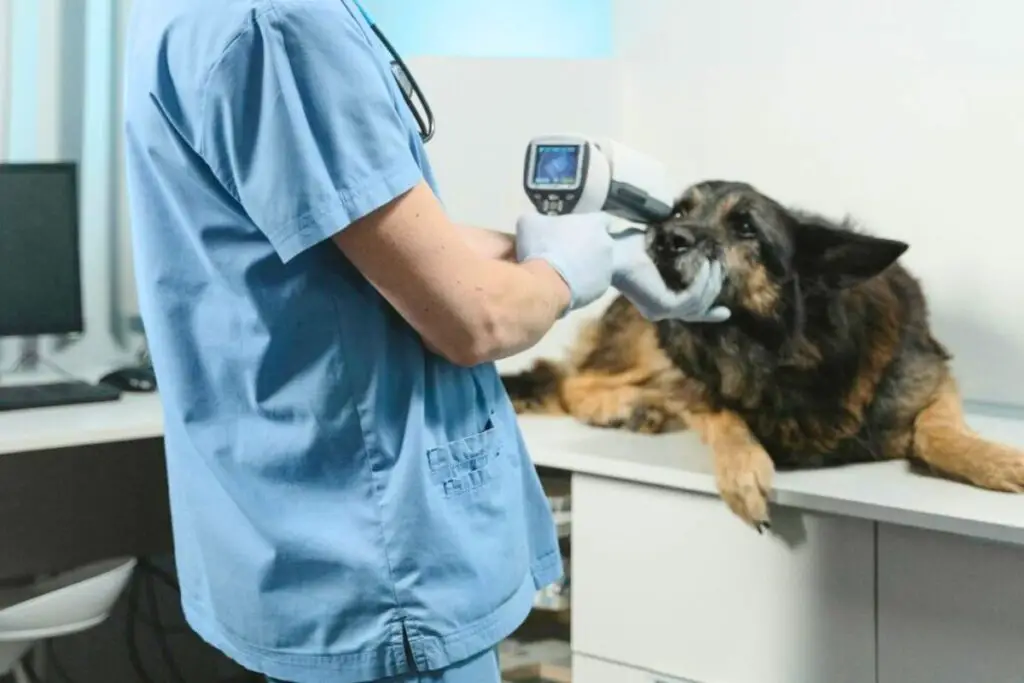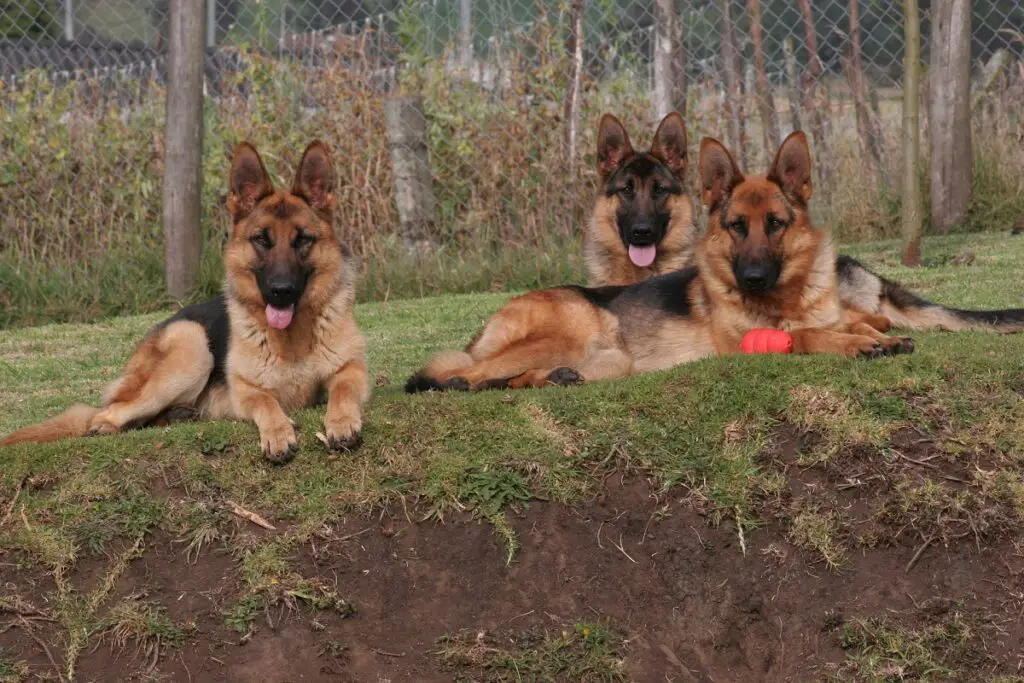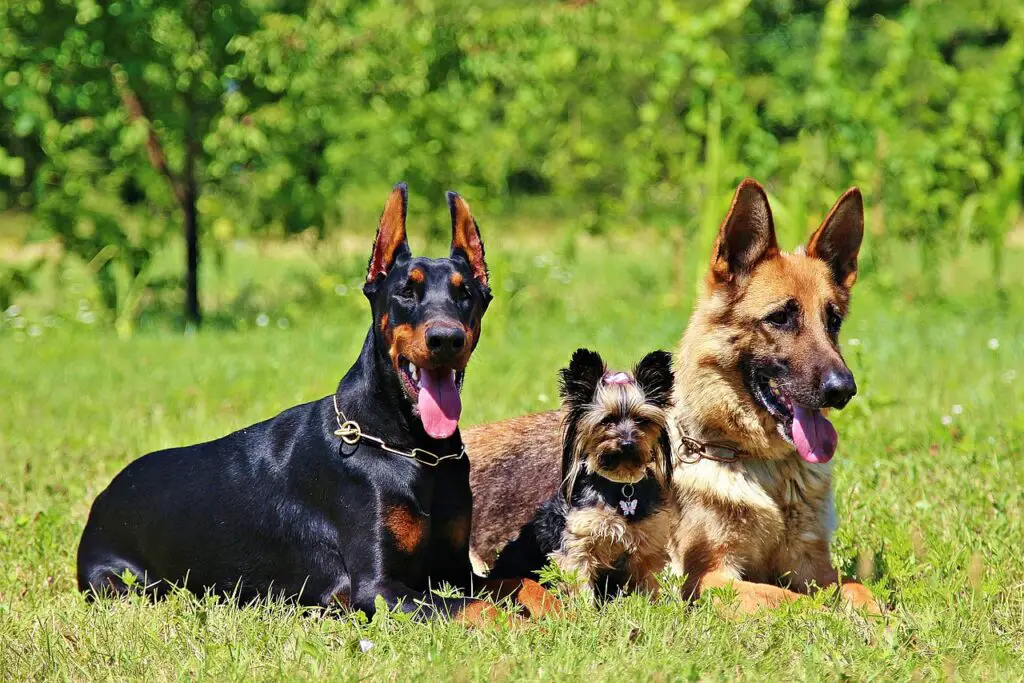The German Shepherd Dog, a breed renowned for intelligence and loyalty, captivates with its versatile nature. From police work to family companionship, these remarkable dogs excel with proper training and care. This guide delves into the defining traits of the German Shepherd, offering practical advice on training techniques that harness their intelligence and energy. We’ll also explore essential care aspects, ensuring your German Shepherd companion thrives in a healthy and fulfilling environment. Discover what makes these dogs so exceptional and learn how to build a strong bond with your loyal protector.
Why do German Shepherds stand out as one of the most versatile and beloved dog breeds? Renowned for agility, intelligence, and loyalty, these dogs seamlessly fit into roles as diverse as family companions and skilled service dogs.
This article takes you through the standout qualities of German Shepherds, their training, care regimes, and health considerations – an indispensable read for current or prospective owners and enthusiasts eager to discover what makes this breed, the German Shepherd, truly special.
Key Takeaways
- German Shepherds are versatile, intelligent, and protective dogs, revered as family pets and service animals globally, with inherent traits shaped by their historical development as herding and working dogs.
- Proper care for a German Shepherd includes regular veterinary check-ups, a balanced diet, sufficient exercise, mental stimulation, and grooming, which help maintain their health and well-being but vary based on each dog’s individual needs.
- Training and socializing German Shepherds from an early age is crucial for behavioral development, and they excel in advanced training due to their intelligence and eager-to-please nature, which also helps in integrating them into families.
Discovering the German Shepherd: An Overview
German Shepherd dogs are members of the herding category of dog breeds and have their roots in Germany, as implied by their name.
The breed’s foundation can be traced back to the late 19th century when Max von Stephanitz, a former cavalry officer and graduate from the Berlin Veterinary College, realized his aspiration for an all-purpose working canine. In 1899, this vision materialized with the emergence of what is now known as the German Shepherd—commencing its fascinating history.
After both World Wars I and II, negative connotations linked to German military practices led to a decline in favorability for these dogs. To avoid backlash due to anti-German sentiments during that era in Britain, they were rebranded as ‘Alsatian Wolf Dog.’’
Despite such challenges, the following traits allowed them not only to recover but also to thrive again among popular dog breeds worldwide.
- Loyalty
- Courageous nature
- Confidence
- Instinctive protection abilities
The German Shepherd was recognized as the 60th breed by the American Kennel Club (AKC) in 1908, and the German Shepherd Dog Club of America was established in 1913.
Their top status is confirmed repeatedly on lists compiled annually by organizations like the American Kennel Club. Nowadays, they are internationally acknowledged for their adaptability across various roles.
- As household companions
- Show ring competitors
- Police dogs
- Service animals
- Search and rescue dogs
- Therapy dogs
German Shepherd dogs are known for their smartness and loyalty. They are protective and active, making them great for many roles in daily life.
The Defining Characteristics of German Shepherds
The German Shepherd dog breed stands out among others with its majestic build, distinctive look, and remarkable disposition. These qualities have garnered them a worldwide following and affection.
The inherent attributes of the shepherd dog are reflective of their initial breeding purpose for herding and protecting flocks. As time passed, these characteristics were refined to fulfill diverse roles in which they consistently demonstrated excellence.
It’s important to acknowledge that every individual German Shepherd has unique personality traits. Yet certain innate features define this particular breed. They exhibit an energetic and sharp temperament indicative of being alert and devoted companions.
German Shepherds are highly intelligent and have a strong desire to work, making them excellent at tasks that require thinking and problem-solving. This is why they’re known as one of the best working dog breeds.
German Shepherds are known for their loyalty and protective nature. They form strong bonds with their families and are always ready to watch over them. This balance of affection and protection is a key reason why they are loved as both family pets and working dogs.
Stature and Appearance
German Shepherd dogs are renowned for their majestic and dominant appearance. These large breed dogs have considerable size, with male German Shepherds weighing in at 75 to 90 pounds and measuring 24 to 26 inches in height.
Female counterparts typically weigh slightly less, between 55 and 70 pounds, and stand 22 to 24 inches tall. They rank among the larger breeds that the American Kennel Club acknowledges.
These dogs possess more than just a significant size. They have a robust and athletic structure marked by well-developed muscles, which enhance their agility as well as strength—attributes critical for demanding roles such as those in police work, military service, or search-and-rescue operations.
German Shepherds undergo some noticeable changes as they grow:
- Ears: Initially, they have soft, floppy ears, but around five months old, they become more pointy and stand upright when the dog is alert.
- Eyes: Their eyes are dark and almond-shaped and convey an intelligent and eager expression.
- Nose: German Shepherds usually have a predominantly black, square nose and a long, straight muzzle.
- Tail: They sport a long, bushy tail with a slight curve, resembling a saber.
German Shepherds are impressive. They are big and strong. Their upright, pointy ears and confident stance make them stand out. They look serious when working and happy when playing at home. People notice them because they look strong and beautiful.
Coat Varieties and Colors
German Shepherds boast a wide range of striking coat colors and patterns that greatly contribute to their attraction. First impressions of this breed are often based on its distinctive fur, which comes in various shades, including:
- Black
- Cream
- Red
- Silver
- Tan
- Gray
- Sable
- White
- Liver
- Blue
- Bi-Color
While the most commonly seen coloration is black and tan, German Shepherds may also sport a solid black coat recognized by prominent organizations such as The Kennel Club and the American Kennel Club (AKC).
Shepherds can come with a variety of coat lengths, including short, medium, or long. Typically, their fur is thick and comes with an undercoat. The texture and thickness of their coats can vary:
- Short
- Dense and thick
- Medium thick
- Thick and fluffy
- Long, with extra fur around their ears, chest, tail, or on the back of their legs.
Selecting a German Shepherd puppy should go beyond just liking their looks or coat color. It’s important to consider their health, personality, and how well they fit into your lifestyle. After all, it’s the dog’s inner qualities, not just their appearance, that will truly shape your bond together.
Temperament and Personality
Renowned for their smartness, devotion, and adaptability to various roles – ranging from beloved household companions to competent working dogs – these canines excel thanks to their innate protective nature and confidence.
German Shepherds are naturally protective and make wonderful family pets, getting along well with children and other animals. They are smart, brave, and confident, traits that have contributed to their popularity as guard dogs.
- Intelligence: They learn quickly and excel in various roles, from training to work.
- Work Drive: They need tasks to stay happy, driven by a strong work ethic from breeding.
- Loyalty: Known for their deep bond with families, they’re protective and ensure their loved ones’ safety.
- Courage: Their bravery makes them ideal for roles like police dog and search-and-rescue operations.
- Born Talkers: German Shepherds are vocal dogs. They bark when they’re bored or to alert you to potential threats.
- Alertness: Excellent watchdogs; they’re always aware of their surroundings.
- Confidence: They handle new situations well, showing a calm demeanor.
- Obedience: Eager to please, they respond well to commands thanks to their intelligence.
- Energy: With high energy levels, they love being active and need regular physical and mental challenges.
- Playfulness: They have a fun side and enjoy playing with their family and other dogs.
- Aloofness: Although potentially aloof toward unknown faces, they can show tenderness within the family circle once properly trained
- Adaptability: They adjust well to different environments, from country life to city living.
- Potential Aggression: Without early socialization, they may show aggression toward strangers and other pets.
- Prey Drive: Their instinct to chase can make walks interesting, and they might not be suitable around small pets.
- Activity Needs: They don’t like being bored and can become destructive if not given enough to do.
When it comes to dog training, German Shepherds exhibit a commendable eagerness to satisfy those who care for them. Their aptitude for following instructions and embracing new skills underscores why individuals prepared to devote adequate time to their dog’s education find them an exemplary choice.
German Shepherd dogs are celebrated for their exceptional versatility, intelligence, and protective instincts, traits that have been carefully honed over generations.
Essential Care for Your German Shepherd
It’s crucial to adopt a committed and knowledgeable approach to nurturing a German Shepherd dog. These active, smart canines have distinctive needs that must be addressed for their health and happiness. You’ll find vital care details here about your German Shepherd’s nutrition, exercise routines, and grooming necessities.
To safeguard the well-being of your German Shepherd dog, it’s imperative to stick with routine vet visits. Key points include:
- Vaccinations and deworming are necessary for puppies.
- Adult dogs require consistent check-ups alongside preventive measures for sustained health.
- There are particular health concerns German Shepherds may inherit. Knowledge of these is beneficial for prompt detection and intervention.
Taking care of a German Shepherd means giving them the best food for their health, plenty of exercise, and mental stimulation. Their high energy and intelligence require both physical activities and brain games to keep them happy.
With proper care and attention, German Shepherds can stay healthy and energetic for a long time, bringing lots of love and affection to their families.
Nutrition and Diet
Ensuring a German Shepherd receives a diet rich in animal protein, complemented with essential fats, and ideally enhanced by raw foods, including fresh, meaty bones, is critical for their health and vitality.
Introducing an assortment of superior food types gradually—such as dry kibble, unprocessed diets, home-prepared meals, or commercially available fresh foods—is key to maintaining nutritional balance while minimizing gastrointestinal disturbances.
It’s vital to tailor your German Shepherd’s nutrition plan to specific factors like age, level of physical activity, and any existing medical conditions. This personalized approach helps sustain peak well-being and prevents weight-related issues.
To keep your German Shepherd healthy, it’s important to control their portions carefully. Limiting treats, ensuring regular exercise, and sticking to set meal times rather than leaving food out all day helps prevent overeating.
Due to the particular dietary needs inherent to the breed, sustained vegetarian diets are not advised for these dogs. Consistently feeding them high-quality food can stave off allergies and digestive problems.
Remember that each dog possesses individual dietary tolerances. Thus, what proves beneficial for one may be less optimal for another. Prioritize consulting a veterinarian when contemplating significant alterations to your pet’s meal regimen or introducing new food varieties. A properly nourished German Shepherd is likely to exhibit signs of happiness and robust health!
Exercise and Activity Needs
German Shepherd dogs are a high-energy breed that thrives when given regular exercise to support their physical and emotional well-being. They require in excess of two hours of activity each day, aligning perfectly with individuals who lead active lives and possess spacious residences with ample yard space.
For mental engagement as well as physical health, various activities are beneficial for German Shepherds.
- Scent-driven games for cognitive stimulation
- Swift-paced walks or runs to bolster endurance
- Trekking across terrain for stamina testing
- Retrieval games such as fetch
- Aquatic activities, which provide gentle yet effective workouts
These forms of play not only contribute to robust fitness but also ensure the psychological enrichment necessary for fostering a grounded and gratified demeanor in these dogs.
It’s important to consider the dog’s developmental stage and current health status when designing an exercise regimen. High-intensity training should be postponed until they reach one or two years old since premature strain on developing joints can have adverse effects.
For German Shepherd dogs, habitual walks paired with steady workout plans serve dual purposes by enhancing both their muscular condition along with their mood stability and general behavior disposition.
Grooming Your Shepherd
German Shepherd dogs boast a luxurious, dense double coat that requires consistent grooming for its upkeep and beauty. Throughout the year, they experience moderate to heavy shedding. It becomes particularly important to use grooming tools during their peak shedding periods to help manage loose hair and keep their coats in good condition.
To prevent stripping of essential oils from their skin and fur, bathing should be sparing, typically once or twice annually, unless the dog has gotten into something particularly messy. If excessive shedding occurs despite regular grooming, you might need to enhance your German Shepherd’s diet with high-quality proteins.
To care during your German Shepherd’s grooming routine, ensure you’re checking their ears regularly for any infection indications as well as keeping up with dental hygiene by brushing their teeth.
Remember not to shave them since this can compromise the protective qualities of their double coat, which defends against extreme weather conditions. Routine grooming isn’t just about looks—it also serves as an excellent chance to:
- Detect any potential skin issues
- Search for ticks or other pests
- Inspect paws for wounds or injuries
- Look out for abnormalities in eye health, such as redness or discharge
- Check if nail trimming is needed
Through these practices, maintaining your German Shepherd’s overall well-being becomes achievable.
Ideal Environment
Raising a happy German Shepherd requires a dedicated pet parent willing to train and play. They thrive in spacious areas but can adapt to apartment life with regular exercise and mental stimulation.
City living may stress them due to noise, so plan outings carefully. They’re social dogs and can feel lonely if left alone for too long, so consider a doggy daycare or a pet sitter.
With proper training and socialization, they can be wonderful companions for kids and babies, becoming their loyal best friends.
Training and Socialization: Shaping a Well-Behaved Dog
It is crucial to start training and socializing German Shepherd dogs while they are young to shape their behavior and ensure they grow up to be well-balanced, obedient adults. Thanks to their high intelligence and willingness to learn, German Shepherds respond exceptionally well to training.
Initiating this process early on enhances their innate working abilities and helps them understand that there’s little in the world that should cause them distress. With an inherent desire to please you and a capacity for rapid command acquisition, these dogs make the training experience enjoyable.
To maximize effectiveness, begin socialization for your German Shepherd between 8 and 12 weeks old, hitting their most critical phase of development, which concludes around 12 and 16 weeks of age when they are exceedingly open-minded about new encounters.
Socialization plays a key role not only in thwarting unwanted behaviors but also in reducing anxiety during common activities such as veterinary visits.
Basic Obedience Training
It is recommended to initiate basic obedience training early on for German Shepherds by focusing on fundamental commands such as “sit,” “down,” and “stay,” as well as techniques for loose-leash walking.
Starting this training when they are young provides immense advantages. These primary instructions lay the groundwork for any comprehensive training regimen and play a crucial role in ensuring that the dog behaves properly under different circumstances.
For German Shepherds, it’s important to maintain consistency during their education to avoid sending conflicting signals that could bewilder them and slow down their progress. Keep the learning sessions brief—ideally between 5 to 10 minutes—to keep your puppy engaged, and emphasize patient repetition so each new command is solidly instilled.
Remember that the purpose of training goes beyond mere command instruction. It also involves cultivating a robust connection with your German Shepherd. Employing positive reinforcement techniques such as using treats or verbal praise not only renders the educational process more enjoyable for your pet but simultaneously fortifies the bond you share with them.
Advanced Training Opportunities
After your German Shepherd has grasped the essentials of obedience, you can proceed to introduce them to more sophisticated training endeavors. Engaging in dog sports is a superb way for German Shepherds to undertake challenging activities and maintain their contentment and equilibrium.
Due to their inherent herding talents, these dogs are particularly adept at participating in herding competitions where they can display their abilities and potentially earn titles as well as championships.
The keen intelligence and dedication of German Shepherds also make them prime participants in obedience trials and rally events, where intricate tasks must be performed with precision.
By engaging your canine companion in specialized pursuits like the ones below, you’re offering continuous mental engagement while honing advanced skills that cement the bond you share with your pet.
- Tracking
- Scent work
- Protection services
- Agility courses
- Sheepherding
It’s crucially important to remember that when a German Shepherd receives adequate training combined with sufficient exercise, it will result in a satisfied and joyous life.
The Role of Socialization
Exposing your German Shepherd puppy to a broad spectrum of experiences, individuals, and environments is vital for nurturing their overall growth. Starting socialization early—upon the pup’s arrival at home—is essential. It leverages the critical initial 16 weeks that are pivotal in shaping a puppy’s adaptability and receptivity to new situations.
Positively introducing puppies to diverse people, places, and scenarios from an early age can improve their ability not only to handle various interactions but also to help prevent future behavioral challenges.
Activities like enrolling them in puppy classes or habituating them to different stimuli—as well as taking them on outings such as road trips or visits to pet stores—are encouraged, even incorporating exposure through dog sports.
For German Shepherds to assimilate successfully into household dynamics and demonstrate sociable rather than hostile behavior patterns, thorough training paired with ongoing socializing is indispensable.
Socialization remains beneficial regardless of age. Adult dogs, including those presenting existing conduct difficulties, might require more focused perseverance but can nonetheless learn acceptable behaviors through continued practice.
Health and Longevity of German Shepherds
German Shepherds, like all breeds, have certain health issues that are more common in their breed. Knowing what these issues are can help owners take better care of their pets and possibly extend the dogs’ lifespans beyond the typical 7 to 10 years.
Many German Shepherds live past this age range when they receive attentive care, consistent veterinary check-ups, and maintain a wholesome lifestyle.
A susceptibility to various health problems is notable in German Shepherds, especially those affecting their musculoskeletal system and digestive tract. Some of these health challenges are hereditary, while others may be influenced by environmental factors or how they’re raised. Recognizing potential health concerns early on enables preventative steps as well as prompt intervention if symptoms arise.
Recognizing German Shepherd Health Issues
German Shepherds need special care for their health because they’re prone to several health issues. It’s important to take them to the vet regularly, especially as they get older. Here are some common health problems to watch out for:
- Hip and Elbow Dysplasia: This is a hereditary condition where the hip or elbow joint doesn’t develop properly, causing pain and mobility issues.
- Degenerative Myelopathy (DM): A neurological disorder that affects mobility over time by damaging the spinal cord.
- Gastric Dilatation and Volvulus (GDV) or Bloat: A life-threatening condition where the stomach becomes bloated and twists on itself, blocking digestion.
- Perianal Fistula or Anal Furunculosis: An inflammatory disease around the anal area marked by tunnel-like formations in the skin.
- Cauda Equina Syndrome and Lumbosacral Syndrome/Disease: Progressive neurological diseases affecting the lower back and hind legs.
- Cancer: German Shepherds are prone to various types of cancers, such as hemangiosarcoma, bone cancer, lung cancer, and intestinal cancer. These malignancies can develop in areas rich in blood supply, like the heart or spleen, posing serious health risks.
- Allergies: German Shepherds are susceptible to seasonal allergies and food allergies, often showing symptoms such as scratching, itching, and skin rashes.
Being informed about the health conditions commonly found in German Shepherds can be crucial for early detection and obtaining appropriate treatment.
Hip dysplasia, which affects nearly 21% of this breed, compromises the hip joint, leading to ambulatory challenges. Roughly 19% of German Shepherds also suffer from elbow dysplasia, causing discomfort and a hesitance to engage in activities like running or playing due to limping.
A prevalent neurological disorder within the breed is degenerative myelopathy. Prompt recognition of symptoms associated with these ailments, followed by veterinary intervention, is key to managing their impact on your dog’s well-being.
Commitment as a pet owner involves being vigilant concerning such breed-specific issues and watching for any indicators that might arise in your German Shepherd. Consistent vet visits coupled with proper nutrition can contribute towards mitigating risks or postponing the development of these health problems.
Preventative Measures and Regular Vet Care
Regular veterinary visits are crucial for the health maintenance of German Shepherds, especially for preventing and identifying early signs of genetic conditions common to the breed. These routine health evaluations should include vaccinations that protect against prevalent dog diseases such as distemper, parvovirus, and rabies.
To safeguard your German Shepherd’s long-term well-being, it is important to carry out yearly tests for parasites and provide prophylactic treatments. Conditions like elbow dysplasia, perianal fistula, and cauda equina syndrome can be effectively managed with a range of therapies, from medication and dietary supplements to surgical interventions if necessary.
It is also vital to take care of your German Shepherd’s dental health by brushing its teeth regularly using specialized toothbrushes designed for dogs along with toothpaste formulated specifically for them.
Coupled with this oral hygiene practice should be adherence to an appropriate diet and consistent exercise routines in order to avoid obesity-related issues.
German Shepherd History and Evolution
The history of the German Shepherd Dog is as captivating as the breed itself
The German Shepherd breed owes its origins to Captain Max von Stephanitz, a German cavalry officer with a vision for an exceptional herding dog. In 1899, he founded the Verein für Deutsche Schäferhunde (Society for the German Shepherd Dog) and laid the breed’s foundation.
His ambition was to cultivate a working dog that exemplified versatility and intellect, leading to the creation of what would become known as the first German Shepherd dog.
Originally bred for herding, the breed shifted focus to police and military work due to industrialization. During World War I, German Shepherds showcased their versatility and bravery, gaining popularity globally.
In the United States, the iconic Rin Tin Tin contributed to their fame. Despite post-war challenges and changes in nomenclature, the breed’s integrity was upheld by von Stephanitz’s commitment to quality.
The divergence between American- and German-bred lines emerged after World War II, with a renewed focus on functional attributes to address performance and health concerns.
Today, German Shepherds are known worldwide for their adaptability. Their clever minds, unwavering loyalty, protective nature, and lively personalities make them stand out wherever they go, no matter what they’re doing.
The First German Shepherd Dog
The German Shepherd dog breed’s origins can be traced back to Horand von Grafrath, originally known as Hektor Linksrhein. Max von Stephanitz purchased him and heralded him as the epitome of a superior working dog’s characteristics.
By virtue of this distinction, Horand was recognized as the first German Shepherd dog and became the inaugural record in the society’s breed register.
Through his descendants, Horand left an indelible mark on subsequent generations of German Shepherds by passing down his favorable physical and psychological attributes. He played a pivotal role in breeding initiatives aimed at perpetuating these desirable traits within the lineage.
In modern times, every German Shepherd carries elements of Horand’s genetic legacy, which have been instrumental in molding contemporary attributes of this breed—a truly multifaceted companion renowned for its intelligence, unwavering loyalty, and adaptability across diverse roles.
German Shepherds in Service
Throughout their history, German Shepherds have shown an extraordinary ability to take on diverse and challenging roles. Their presence has been notable as Military Working Dogs (MWDs), where they are valued for their keen intellect, ease of training, and the capacity to undertake a wide range of military duties.
In instances such as search and rescue operations—where during the tragic events of September 11th, dogs like NYPD K-9 Apollo were honored—the importance of these canines has become evident.
They also excel in law enforcement through tasks like tracking suspects and narcotics detection while serving prominently within police units. Their utility extends into military contexts with proficiency in explosive ordnance disposal (EOD) missions and patrolling duties. Likewise, guide dogs or assistants for those living with disabilities showcase them acting in service dog capacities.
These attributes reflect why this breed is celebrated for its intelligence, trainability, and stamina, which prime them exceptionally well for demanding work assignments.
Beyond these high-stakes environments, German Shepherds fulfill important roles aiding individuals who are visually impaired—as illustrated by Buddy, who was notably acknowledged as the first Seeing Eye Dog—a testament to their effectiveness as service animals aiding those with sight challenges.
Mostly driven by supreme intelligence coupled with adaptability at heart — most German Shepherds leave lasting impressions whether engaged actively in professional capacities, including working jobs associated closely with human aid or participating energetically across various canine sports, even when simply being adored family companions.
Integrating a German Shepherd into Your Family
Welcoming a German Shepherd into your home can be a fulfilling and thrilling journey, but it is critical to ensure you are fully prepared for the integration of such an energetic breed.
This necessitates taking measures like making your living space safe for dogs and gathering all necessary supplies, including nourishment, appropriate leashes, collars, harnesses, toys designed for chewing, cozy bedding for sleep time, food bowls as well as treats that will aid in training sessions.
Upon the arrival of the new canine member to your family household – whether it’s a puppy or an adult dog – building trust while setting clear limitations is essential. Consider taking them on walks, which are helpful in dispensing their abundant energy levels.
Promptly start housebreaking routines. It’s imperative that when introducing family members to this breed, they meet within serene settings where introductions occur gently with everyone at ease, allowing the German Shepherd to approach individually whilst being held by a leash, ensuring secure interactions.
Remember, fostering successful adaptation lies within regularity along with temperate guidance coupled with uplifting reinforcement strategies.
It should not be forgotten that following adoption from shelters, these dogs often require ample periods of adjusting free from prior anxieties hence:
- Refrain from offering novel, enthralling playthings initially, preventing overexcitement or manifestation of territorial behavior.
- Maintain tranquility through a steady daily regimen contributing towards generating feelings of safety plus comfort.
- Dedicate sufficient amounts of physical activity paired with cognitive challenges aiding both the acclimatization process and promoting bond development among newly expanded human-canine alliance.
- Approachability blended with empathetic consistency throughout their learning curve fosters transforming this intelligent companion into a valued addition amidst familial enclave.
Choosing the Right German Shepherd Puppy
Selecting the appropriate German Shepherd puppy is essential for a smooth transition into your household. Look for puppies that are curious, social, and affectionate without being excessively assertive or shy.
It’s important to note when deciding between genders that male German Shepherd puppies tend to grow larger and heavier than their female counterparts, who usually remain somewhat smaller with less body weight.
Reputable breeders can help make an informed choice by assessing each puppy’s character traits and pairing them with compatible owners. They often recommend participating in obedience classes specifically designed for puppies.
When you’re picking out a German Shepherd puppy, remember that personality traits, overall disposition, and health status outweigh physical attributes like size or fur color. A well-suited pup will assimilate seamlessly into your family dynamic and become an endeared pet within your home.
Living with German Shepherds and Other Pets
German Shepherds have the potential to live in harmony with other pets, although this necessitates careful introductions and consistent oversight. To promote a tranquil first encounter between a German Shepherd and another pet, it should take place in an impartial area that is well-managed, possibly seeking assistance from a rescue organization or an experienced trainer.
To introduce a German Shepherd to another canine companion correctly:
- Take them on separate walks.
- Begin walking them together while they are both securely leashed during their initial meetings inside and outside.
- Slowly allow them to get closer while observing how they interact.
- Encourage peaceful behavior rather than forcing interaction by rewarding non-aggressive gestures and signs of relaxation with treats.
Diligence and methodical guidance can teach German Shepherds to live peacefully alongside other household animals. Success in integrating other pets requires persistent dedication as well as empathetic understanding over time—there’s no rushing such relationships. Patience here is key for cohabitation success.
Adoption and Rescue: Finding Your German Shepherd Companion
Adopting a German Shepherd offers an immensely fulfilling opportunity to give a loving forever home to a dog in need. There’s a range of ages available for those who wish to adopt, from spirited puppies and mature adult dogs to the more serene senior German Shepherds, all looking for someone to offer them care and affection.
Search for Adoptable German Shepherds
There are several places you can consider when looking to adopt a German Shepherd.
To embark on finding adoptable German Shepherds ready for their new homes, one might consider several avenues:
- Your local animal shelters. The shelter staff has usually evaluated these dogs and have received basic veterinary care, including vaccinations and neutering/spaying.
- Rescues that focus specifically on the breed.
- Websites such as Petfinder and Adopt-a-Pet provide search options tailored by age, gender, and compatibility with other pets, among others. You can use filters to search for dogs based on the following:AgeSizeBreedGenderLocation
- Social media platforms and forums where there is an active community dedicated to rehoming these canines. Such places are fantastic resources for networking or discovering individuals seeking new families for their own German Shepherds. These communities often post about dogs in need of homes and can provide valuable information about the dog’s temperament, health, and history.
The decision to welcome a German Shepherd into your life means much more than providing shelter. It encompasses the full commitment to caring deeply about the welfare of your future companion throughout its entire lifespan.
Before proceeding with adoption, ensure you thoroughly assess if you are truly prepared—for love is only part of what’s necessary—and you must also have adequate means at hand so that this noble breed may thrive in comfort alongside you under your attentive guardianship.
Keep in mind that adopting a dog is a lifelong commitment for pet parents, so take your time to find the right fit for your family.
Supporting German Shepherd Rescues
Assisting the incredible rescue dogs and contributing to German Shepherd rescues is an admirable way to help these organizations. The critical work done by rescue groups includes nurturing and restoring German Shepherds, providing them with another opportunity to be part of a loving permanent family.
There are multiple methods through which you can bolster their efforts.
One of the most straightforward forms of support for German Shepherd rescues is through monetary donations. These funds aid in affording medical attention, sustenance, and other fundamental necessities for the rescued animals under their wing.
Alternatively, donating your time as a volunteer offers immense value too. Many rescue operations rely on volunteers for various activities ranging from exercising dogs and offering foster care to handling office tasks.
Participating in or spreading awareness about fundraisers such as dog walks, and charity auctions organized by German Shepherd rescues are crucial ways you can assist these establishments — not forgetting educational events that highlight their cause.
Every contribution makes a significant difference in enhancing the welfare of destitute German Shepherds deserving assistance.
Frequently Asked Questions
Is a German Shepherd a good house dog?
Certainly, for households that are dynamic and those with children, German Shepherds can be suitable house dogs. To avoid issues such as aggression or anxiety, it is essential they receive proper training and handling.
What is the German Shepherd best known for?
Renowned for their intelligence, loyalty, and diligent disposition, German Shepherds frequently serve as guide dogs and are employed in therapeutic roles as well as in diverse law enforcement and military capacities.
They can be excellent companions when integrated into family settings.
Are German Shepherds easy to take care of?
German Shepherds, being large and energetic canines, necessitate attentive maintenance, continual training, and routine physical activity to flourish and maintain their contentment. Adequate dietetics and consistent health check-ups with a veterinarian are essential for them. They also gain from a particular focus on aspects such as coat care and interaction with others.
Is a German Shepherd a high-maintenance dog?
German Shepherds demand ongoing attention and training because of their energetic dispositions and strong work ethic. They are by no means low-maintenance dogs.
Is a German Shepherd a good pet?
Certainly, with the right handling and appropriate training, German Shepherds can be excellent companions for energetic families and households. A lack of proper training might lead to anxiety or aggression in these dogs.
Conclusion
Throughout this detailed guide, we have taken a deep dive into the realm of German Shepherds. Their origins, attributes, necessities for upkeep, and training have been thoroughly examined—underscoring that these canines are not merely household companions but rather they embody intelligence, fidelity, and adaptability and possess an amalgam of features distinguishing them from other dog breeds.
They truly shine in any capacity they serve – whether in defense roles with the military or as service dogs. When engaging in canine competitions or fulfilling their duties as cherished family pets, German Shepherds demonstrate outstanding proficiency.
They stand apart due to their smartness, unwavering loyalty, instinctive vigilance, and energetic nature, which combine to make them an extraordinary breed.
For those who already share their home with a German Shepherd or those considering adding one to the family circle, we hope that this guide has enriched your understanding substantially.
Bear in mind, though: adopting a German Shepherd comes hand-in-hand with responsibilities demanding dedication both temporally and intellectually. Providing appropriate care coupled with effective training means these magnificent creatures can offer unbounded delight and fellowship within your life.
German Shepherds are intelligent, loyal, and courageous dogs, making exceptional companions and working partners. Their protective instincts and trainability make them ideal for various roles, from family pets to police dogs. However, potential owners must understand their need for consistent training, mental stimulation, and physical exercise. Proper socialization and a commitment to their specific grooming and health needs are crucial for a well-adjusted and happy German Shepherd. With the right care and dedication, these remarkable dogs thrive and enrich the lives of their families.

